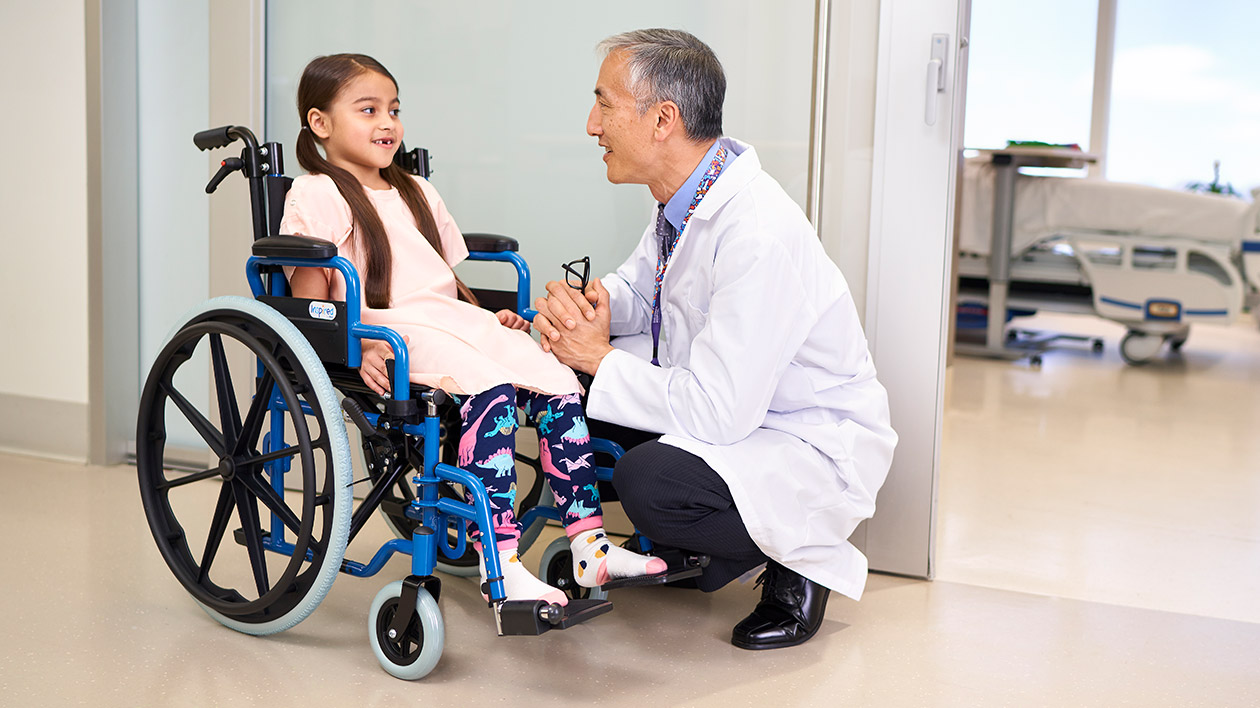Main content
We use cookies and similar tools to give you the best website experience. By using our site, you accept our Websites Privacy Policy.
Our experts at Sala Institute for Child and Family Centered Care know that at times, a child may find medical treatment to be painful or intimidating. And the more a child fears pain, the worse that pain often feels.
We approach pain management in two ways. We work with your child to ease anxiety, and we use the pain-relieving medications and techniques that work best to make your child as comfortable as possible.
Donate to Sala Institute
Your gift supports programs that help improve the health and wellbeing of children and families.
Make a DonationAs a parent or family member, you play a big role in helping ease your child’s pain. Your calming presence and reassurance that everything will be OK goes a long way in helping your child feel relaxed and confident.
A child’s pain might come from an injury, after surgery, or be related to the flare-up of a chronic condition, such as sickle cell anemia, Crohn’s disease, or cancer. Pain can also come from a blood draw or from placement of an intravenous (IV) line. No matter the source, it’s best to treat pain early and tailor treatment specifically for your child. This helps your child to begin healing.

We have developed a Comfort 5 Plan to address and lessen your child’s pain at Hassenfeld Children’s Hospital at NYU Langone.
There are medicines that are safe and effective in reducing pain in children. Often these medicines are taken by mouth or given by IV infusion.
If your child is old enough, they might receive a patient-controlled analgesia pump. This device allows your child to receive pain medication instantly through an IV line when they decide it is needed. The pump is carefully designed so that your child can only receive a safe dose.
When a child is too young to control their own pain medication, our nurses frequently evaluate your child. A nurse is always available to help your child get the level of pain relief they need.
If you believe your child is in pain and the typical approaches aren’t helping, talk with their doctor or nurse. Our pain management team can provide a consultation.
For more severe pain, we offer regional anesthesia, such as injectable nerve blocks and spinal medications, as well as epidural catheters. They allow a continuous supply of pain-relieving medication to be delivered directly to the source of the pain. Regional anesthesia allows us to avoid using prescription pain medicine. Younger children often receive regional anesthesia while they are asleep during surgery. Older children receive it with sedation before surgery.
Medication is only one way to manage pain. Nonmedical approaches are also highly effective.
Child life specialists and creative arts therapists use music, art, play, and relaxation to help your child cope with pain. Our integrative health team teaches meditation and other mind–body practices to minimize pain.
If your child is feeling anxious or depressed, those feelings can affect their experience of pain. Our child psychologists and psychiatrists can provide extra support.
We can help you find a Hassenfeld Children’s Hospital doctor.
Call 646-929-7970
or
browse our specialists.